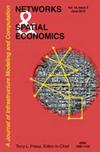创新是改变企业生产力的因素:测量与解释问题
IF 1.5
3区 工程技术
Q3 OPERATIONS RESEARCH & MANAGEMENT SCIENCE
引用次数: 0
摘要
本文的目的是介绍创新对企业生产力影响评估领域的实证研究现状,详细介绍创新的统计测量问题和积累结果的有意义的解释。本文采用多因子系统化、批判性分析、内容分析和综合概括的方法,对创新对生产力影响的定量分析论文样本进行了研究。本文从四个层面分析了创新的统计测量和一致性解释问题:创新作为一种经济现象;创新作为特定国家经济生产力变化的一个因素;在全球范围内,创新是比较经济动态的一个因素,在俄罗斯,创新是工业发展的一个因素。结论和相关性。在现代经济中,创新是一种独立的生产要素,不同于科学研究、专利发明、物质技术基础等要素。在其他因素和(或)负面的背景下,创新的影响往往是微不足道的。在企业调查结果的基础上进行的微观经济研究在经济的区域、部门和跨期范围方面非常有限。衡量创新的主观方法和评估创新与生产率之间关系的CDM模型的主导地位导致了信息积累较少的结果。在评估创新对生产力的影响的问题上,主流方法的分析潜力正在耗尽,在不久的将来,不可能在不丧失可比性的情况下弥补它们的弱点本文章由计算机程序翻译,如有差异,请以英文原文为准。
Innovation As a Factor of Changing the Productivity of Enterprises: Measurement and Interpretation Issues
The purpose of this аrticle is to present the current state of empirical research in the field of assessing the impact of innovations on enterprise productivity, detailing the problems of statistical measurement of innovations and meaningful interpretation of accumulated results. To study a sample of scientific papers devoted to the quantitative analysis of the impact of innovations on productivity, the methods of multifactorial systematization, critical analysis, content analysis and synthetic generalization were used. The problems of statistical measurement and consistent interpretation are analyzed in the context of four levels: innovation as an economic phenomenon; innovation as a factor of productivity change in the economy of a particular country; innovation as a factor of comparative economic dynamics in the global scale and innovation as a factor of industrial development in Russia. Conclusions and Relevance. In the modern economy, innovations are an independent factor of production, different from scientific research, patented inventions, material and technical base and other factors. The impact of innovations is often insignificant against the background of other factors and (or) negative. Microeconomic studies carried out on the basis of the results of surveys of enterprises are strongly limited in terms of regional, sectoral and intertemporal coverage of the economy. The dominance of the subjective approach to measuring innovation and the CDM model to assess the relationship between innovation and productivity leads to the accumulation of less informative results. The analytical potential of mainstream approaches to the problem of assessing the impact of innovations on productivity is wearing out and it will not be possible to compensate for their weaknesses without losing comparability in the near future
求助全文
通过发布文献求助,成功后即可免费获取论文全文。
去求助
来源期刊

Networks & Spatial Economics
社会科学-运筹学与管理科学
CiteScore
4.00
自引率
4.20%
发文量
26
审稿时长
>12 weeks
期刊介绍:
Networks and Spatial Economics (NETS) is devoted to the mathematical and numerical study of economic activities facilitated by human infrastructure, broadly defined to include technologies pertinent to information, telecommunications, the Internet, transportation, energy storage and transmission, and water resources. Because the spatial organization of infrastructure most generally takes the form of networks, the journal encourages submissions that employ a network perspective. However, non-network continuum models are also recognized as an important tradition that has provided great insight into spatial economic phenomena; consequently, the journal welcomes with equal enthusiasm submissions based on continuum models.
The journal welcomes the full spectrum of high quality work in networks and spatial economics including theoretical studies, case studies and algorithmic investigations, as well as manuscripts that combine these aspects. Although not devoted exclusively to theoretical studies, the journal is "theory-friendly". That is, well thought out theoretical analyses of important network and spatial economic problems will be considered without bias even if they do not include case studies or numerical examples.
 求助内容:
求助内容: 应助结果提醒方式:
应助结果提醒方式:


